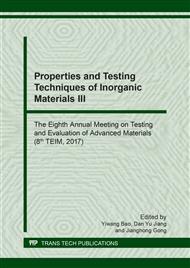p.179
p.187
p.193
p.201
p.206
p.211
p.218
p.224
p.231
Study on the Reaction of NCFO-BZCYYb Catalyst of Methane Steam Reforming
Abstract:
Ni0.5Cu0.5Fe2O4 and BaZr0.1Ce0.7Y0.1Yb0.1O3-d were prepared by an aqueous sol–gel process. The Ni0.5Cu0.5Fe2O4 were modified by various content of BaZr0.1Ce0.7Y0.1Yb0.1O3-d. Their microstructure and phase were observed by SEM and XRD. We studied the effect of BaZr0.1Ce0.7Y0.1Yb0.1O3-d on the methane reforming property of catalyst powder at 650°C, 20ml/min CH4 and x wt. % water vapor (x=3, 10). The composition of exhaust gas was monitored by on-line mass spectrometer. It shown that with the increase of BaZr0.1Ce0.7Y0.1Yb0.1O3-d, the conversion of CH4 decreased. Moreover, the selectivity of CO decreased when water vapor added. Investigated the microstructure and Raman of the power that has catalyzed for 4 hours, It can be found that there were only a few deposited carbon almost cannot detect by Raman.
Info:
Periodical:
Pages:
206-210
Citation:
Online since:
April 2018
Authors:
Keywords:
Price:
Сopyright:
© 2018 Trans Tech Publications Ltd. All Rights Reserved
Share:
Citation:


